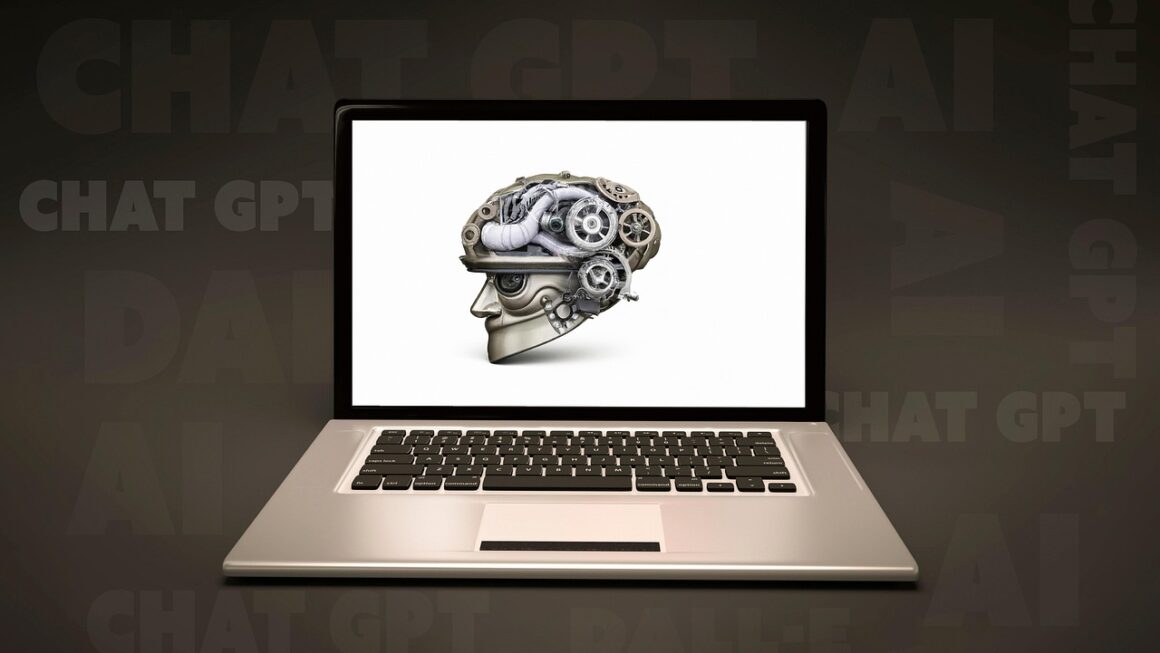The world of customer interaction is constantly evolving, and at the forefront of this evolution stands the chatbot. No longer a futuristic novelty, chatbots are now integral to businesses across industries, offering 24/7 support, streamlining operations, and enhancing customer experiences. But what exactly are chatbots, and how can they benefit your business? This comprehensive guide delves into the world of chatbots, exploring their functionality, benefits, implementation, and future trends.
What is a Chatbot?
Defining a Chatbot
A chatbot is essentially a computer program designed to simulate conversation with human users, especially over the internet. These AI-powered assistants can interact with people through text, voice, or even visual interfaces. Chatbots can answer questions, provide information, perform tasks, and even offer personalized recommendations, all without the need for human intervention.
How Chatbots Work
Chatbots operate using a combination of techniques, including:
- Natural Language Processing (NLP): This allows the chatbot to understand and interpret human language. NLP algorithms break down the user’s input, identify the intent, and extract relevant information.
- Machine Learning (ML): ML algorithms enable the chatbot to learn from past interactions and improve its accuracy and efficiency over time. The more data the chatbot processes, the better it becomes at understanding user requests and providing appropriate responses.
- Rule-Based Systems: Some chatbots rely on pre-programmed rules and scripts to respond to specific keywords or phrases. While less sophisticated than AI-powered chatbots, rule-based systems can be effective for handling simple, repetitive tasks.
Example: Imagine a customer asking “What are your hours of operation?”. An NLP-powered chatbot will recognize “hours of operation” as the intent and extract the query to provide a relevant answer from its knowledge base. A rule-based chatbot, on the other hand, would need a pre-programmed rule specifically for that phrase.
Benefits of Using Chatbots
Improved Customer Service
One of the most significant benefits of chatbots is their ability to provide instant and consistent customer support. Unlike human agents, chatbots are available 24/7, 365 days a year, ensuring that customers can get the help they need regardless of the time or day.
- 24/7 Availability: Customers can access support anytime, eliminating wait times and improving satisfaction.
- Instant Responses: Chatbots can provide immediate answers to common questions, resolving issues quickly.
- Consistent Service: Chatbots deliver standardized responses, ensuring that all customers receive the same level of service.
Increased Efficiency and Reduced Costs
Chatbots can automate many tasks that would otherwise require human agents, freeing up staff to focus on more complex issues. This automation can lead to significant cost savings and improved efficiency.
- Automated Task Completion: Chatbots can handle tasks such as scheduling appointments, processing orders, and providing order updates.
- Reduced Operational Costs: By automating tasks, chatbots can reduce the need for human agents, lowering labor costs.
- Improved Agent Productivity: Chatbots can handle routine inquiries, allowing human agents to focus on more complex and challenging issues.
For example, a financial institution can use a chatbot to answer basic questions about account balances and transaction history, reducing the burden on call center staff.
Enhanced Lead Generation and Sales
Chatbots can play a crucial role in lead generation and sales by engaging with potential customers, answering their questions, and guiding them through the sales funnel. They can also personalize the sales process by providing tailored recommendations based on customer preferences and behaviors.
- Proactive Engagement: Chatbots can initiate conversations with website visitors, engaging them and encouraging them to explore products or services.
- Lead Qualification: Chatbots can ask qualifying questions to identify potential leads and gather information about their needs and interests.
- Personalized Recommendations: Chatbots can provide personalized product recommendations based on customer data, increasing the likelihood of a sale.
A real estate company could use a chatbot on their website to qualify leads by asking about budget, desired location, and property preferences. The chatbot can then schedule showings for suitable properties with a human agent.
Types of Chatbots
Rule-Based Chatbots
Rule-based chatbots, also known as decision-tree chatbots, follow a predetermined set of rules and responses. They are typically used for simple tasks and rely on keywords or specific phrases to trigger pre-defined answers. These chatbots are easier to implement but have limited capabilities and cannot handle complex or nuanced conversations.
AI-Powered Chatbots
AI-powered chatbots utilize natural language processing (NLP) and machine learning (ML) to understand and respond to user queries. They can learn from past interactions, adapt to different communication styles, and handle more complex conversations. These chatbots are more sophisticated and can provide a more personalized and engaging experience.
- NLP-driven: Understands the nuances of human language, including slang, typos, and different dialects.
- ML-powered: Improves accuracy and efficiency over time by learning from past interactions.
- Contextual Understanding: Can maintain context throughout a conversation, providing more relevant and accurate responses.
Hybrid Chatbots
Hybrid chatbots combine the features of both rule-based and AI-powered chatbots. They use rule-based logic for simple tasks and rely on AI for more complex inquiries. This approach offers a balance between ease of implementation and advanced functionality.
For instance, a hybrid chatbot could use a rule-based system to guide users through a basic troubleshooting process and then escalate to an AI-powered system if the issue requires more in-depth assistance.
Implementing Chatbots Effectively
Defining Clear Goals and Objectives
Before implementing a chatbot, it’s crucial to define clear goals and objectives. What problems are you trying to solve? What tasks do you want the chatbot to automate? What key performance indicators (KPIs) will you use to measure success?
- Improve Customer Satisfaction: Reduce wait times and provide instant support.
- Increase Sales: Generate leads and guide customers through the sales funnel.
- Reduce Operational Costs: Automate tasks and free up human agents.
Choosing the Right Platform
There are numerous chatbot platforms available, each with its own strengths and weaknesses. Consider factors such as ease of use, scalability, integration capabilities, and pricing when selecting a platform.
- Consider your technical capabilities: Some platforms require coding knowledge, while others offer a no-code interface.
- Think about integration: Ensure the platform can integrate with your existing systems, such as your CRM, help desk, and e-commerce platform.
- Evaluate pricing: Compare pricing models and choose a platform that fits your budget. Popular platforms include Dialogflow, Amazon Lex, and Microsoft Bot Framework.
Training and Optimization
Once your chatbot is implemented, it’s essential to train it effectively and continuously optimize its performance. This involves providing the chatbot with relevant data, monitoring its interactions, and making adjustments as needed. Use real customer interactions to refine the chatbot’s responses and improve its accuracy. Regularly review chatbot performance metrics, such as conversation completion rates, customer satisfaction scores, and lead generation numbers, to identify areas for improvement.
Future Trends in Chatbots
Advanced AI and NLP
Chatbots are becoming increasingly sophisticated thanks to advances in AI and NLP. Future chatbots will be able to understand and respond to more complex and nuanced language, providing a more natural and human-like conversational experience.
Personalization and Contextualization
Future chatbots will be able to personalize interactions based on individual customer preferences, behaviors, and history. They will also be able to maintain context throughout a conversation, providing more relevant and accurate responses.
Integration with Emerging Technologies
Chatbots are being integrated with emerging technologies such as virtual reality (VR) and augmented reality (AR), creating new and immersive experiences for customers. These integrations will enable customers to interact with products and services in a more engaging and interactive way.
Conclusion
Chatbots are transforming the way businesses interact with their customers, offering numerous benefits such as improved customer service, increased efficiency, and enhanced lead generation. By understanding the different types of chatbots, implementing them effectively, and staying abreast of future trends, businesses can leverage the power of chatbots to achieve their goals and stay ahead of the competition. Embracing chatbot technology is no longer just an option, but a necessity for businesses looking to thrive in today’s dynamic and customer-centric environment.




